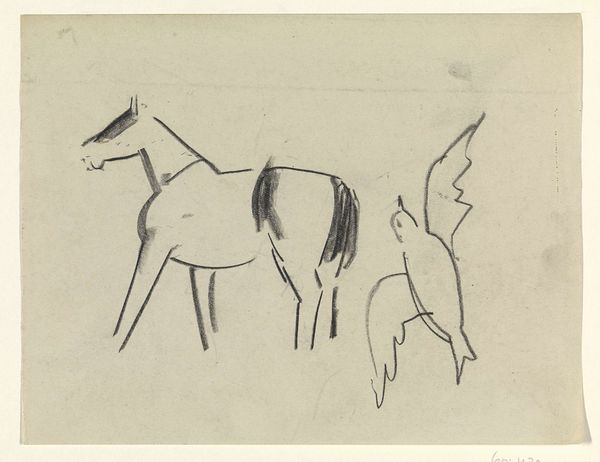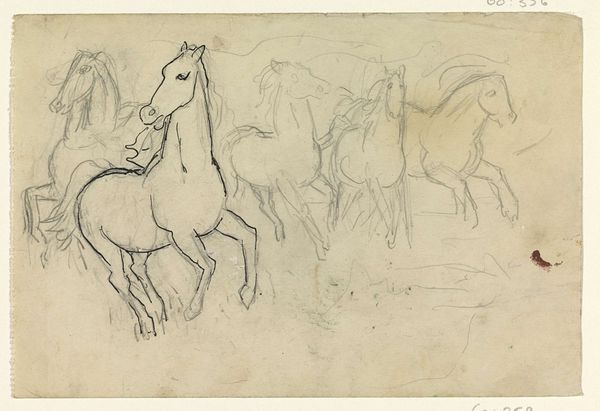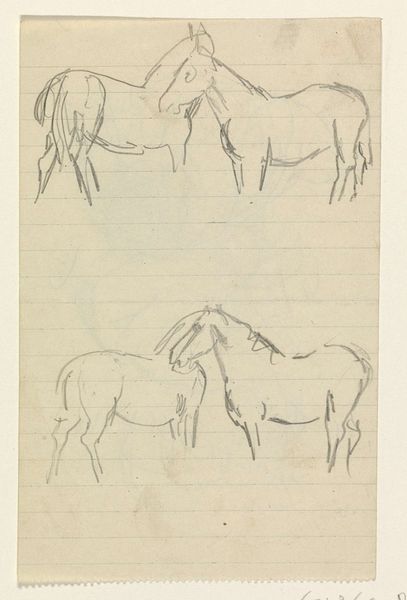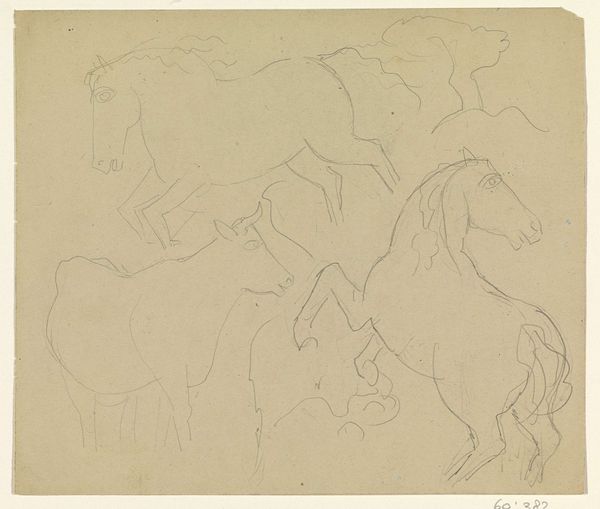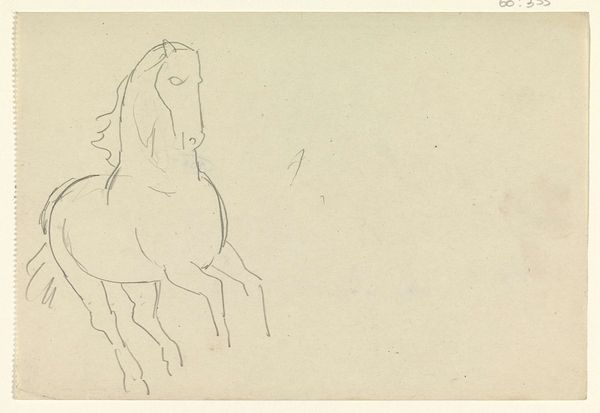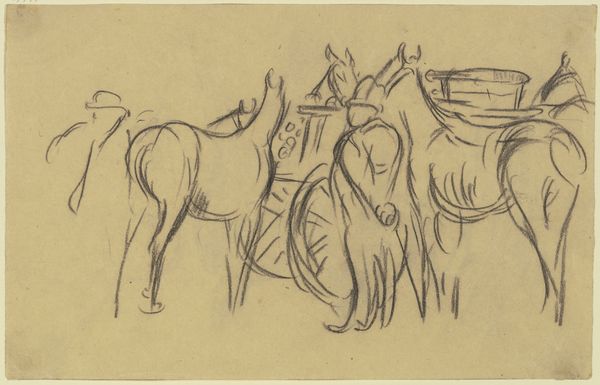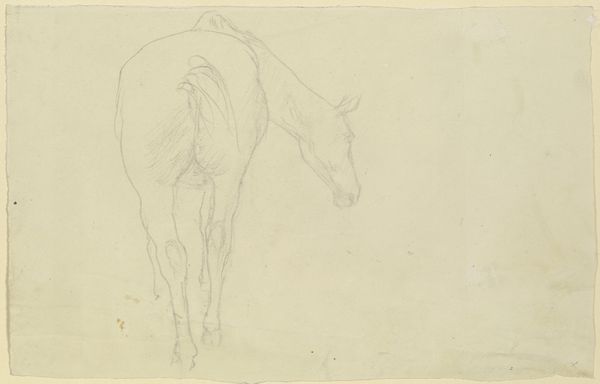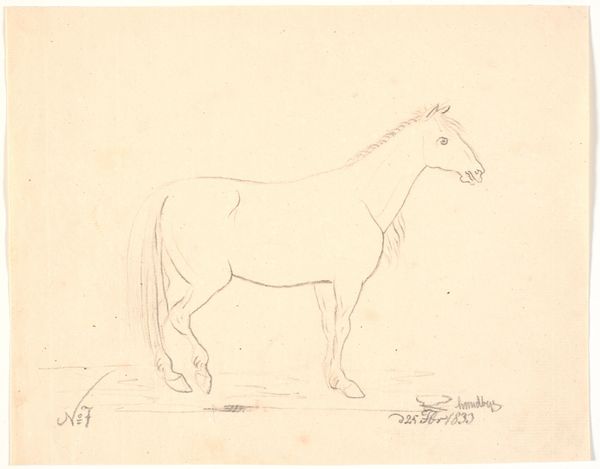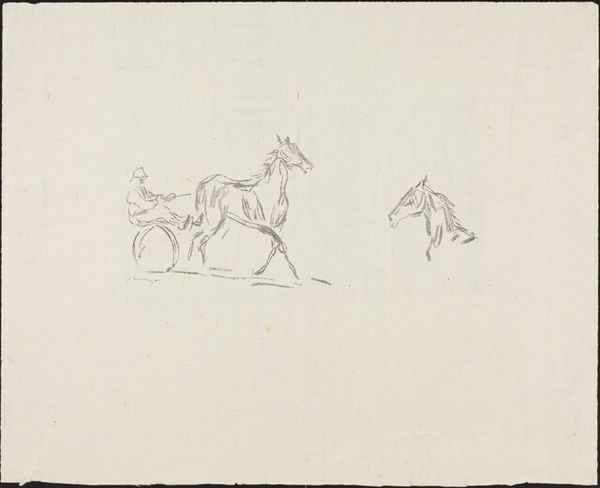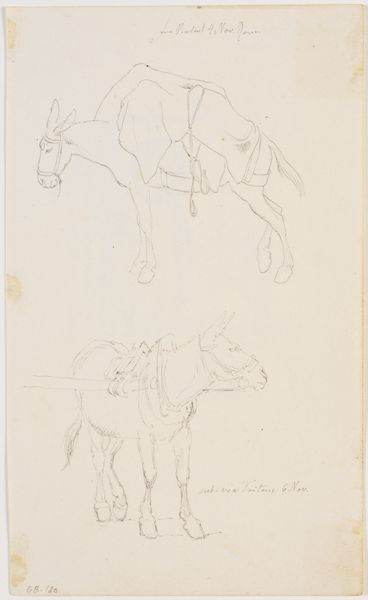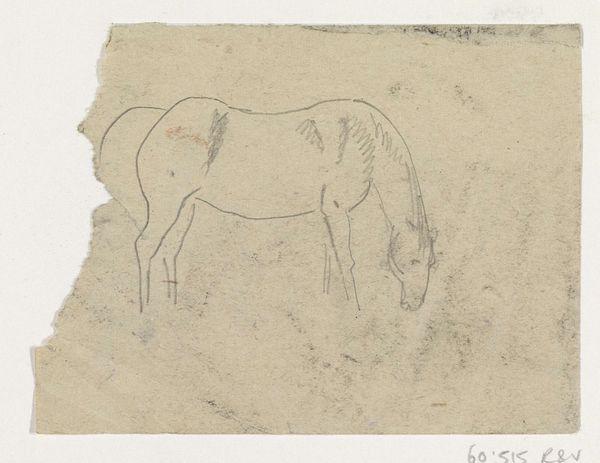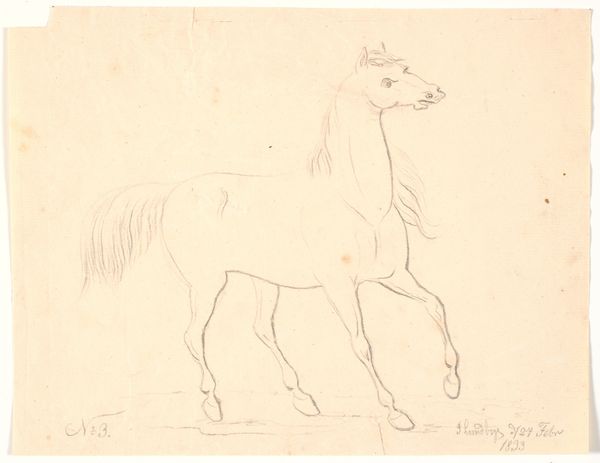
drawing, pencil
#
drawing
#
landscape
#
figuration
#
pencil
#
horse
#
realism
Dimensions: height 99 mm, width 142 mm
Copyright: Rijks Museum: Open Domain
Curator: Before us is "Drie paarden" by Leo Gestel, dating from around 1891 to 1941. It's a pencil drawing here at the Rijksmuseum. Editor: Immediately, what strikes me is the raw energy. It’s a sketch, yes, but the quick, confident lines suggest a deep understanding, perhaps even an affinity for the animal form. Curator: Precisely. Look at the economy of line, the way he captures the essence of the horses' musculature and stance with such brevity. Notice especially the relationships among them; it is almost an academic study in comparative anatomy. Editor: For centuries, the horse has been an emblem of power, freedom, and nobility across numerous cultures. Do these particular renderings evoke such traditional symbolism for you, or do they seem more intimate? Curator: I am less interested in overarching iconographic narratives here. For me, it is about Gestel's process of reducing the horses to their basic shapes—almost as abstract, formal exercises. See the flattened planes and the angular junctions forming these animal bodies. The overall texture, too, enhances their somewhat abstract quality. Editor: Even these minimal lines, for me, conjure feelings. The top-most figure seems poised, almost apprehensive. The horse depicted at the bottom displays a kind of stalwart energy, while the center figure seems a bit more withdrawn or melancholic. Perhaps each one references a different aspect of the human condition, if you read into it that way. Curator: Possibly, but what I find really striking is the spatial ambiguity created by the overlapping figures and their relative placement on the paper’s surface. This tension suggests an active mind constantly reevaluating perceptions. The white of the paper becomes more than background, it becomes a structural component. Editor: Absolutely. Gestel gives us a sense of perpetual becoming here—a fluid interplay of possibility rather than a static depiction of concrete form. There is power in incompleteness, isn’t there? Curator: Agreed. The piece embodies not a final, polished image, but an invitation into the artist's mind and his structural thought process. Editor: Yes. This exploration truly uncovers how simple lines can convey profound emotion and resonate deeply across different eras and individual experiences.
Comments
No comments
Be the first to comment and join the conversation on the ultimate creative platform.
